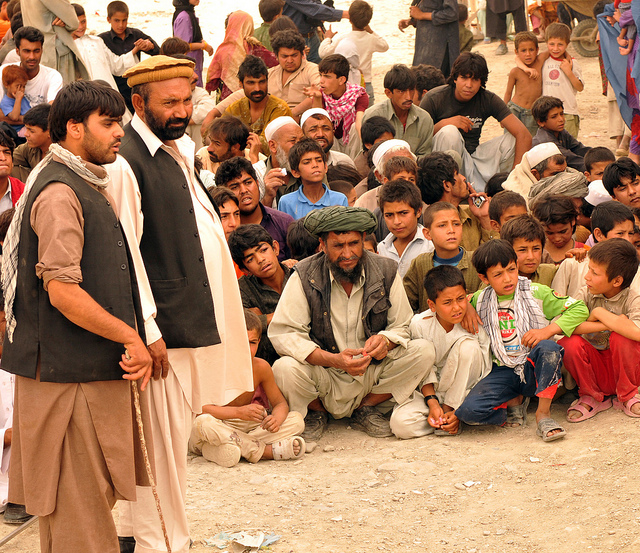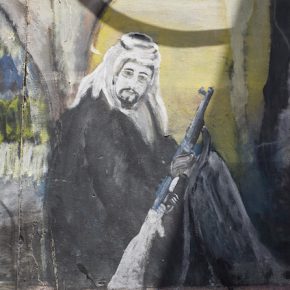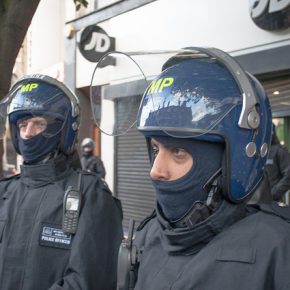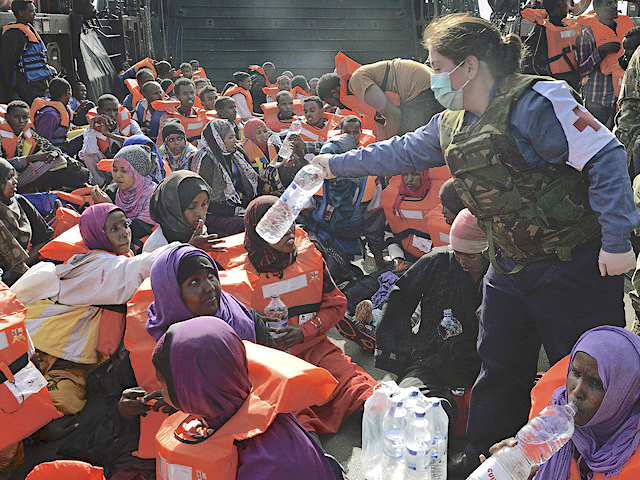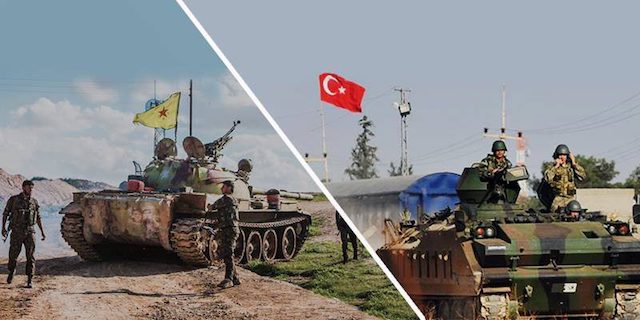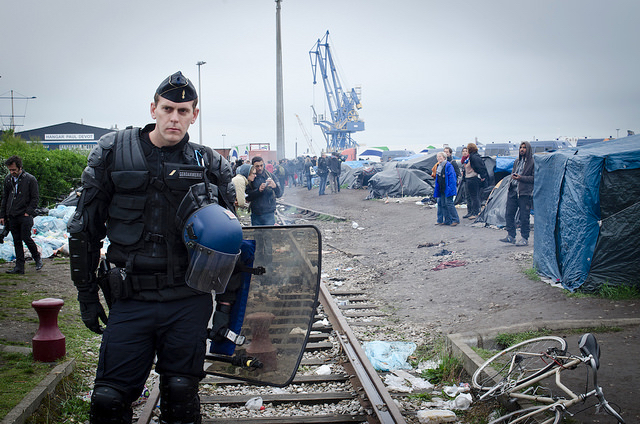As refugees continue to stream into Europe from Western Asia, fears of terrorist infiltration grow. The problem does not begin, as most persons believe, with Syria, and Iraq. Its origins go back much further, to Afghanistan, and the refugee crisis which began in the country, during the Russian occupation.
During the Soviet-Afghan War, Afghan refugees in Iran and Pakistan were at once depoliticised, and radicalised. Tasked with administering millions of homeless people indefinitely, both countries sought to neutralise their refugee populations. Over the next decade, Afghan refugees became increasingly prominent in the Islamist guerrilla movement fighting Moscow, reflecting how they were consciously isolated, and exploited, in a process that made them vulnerable to organised violence.
Following the Red Army’s invasion in December 1979, numerous organisations formed in opposition to the European military presence, and an increasingly authoritarian Communist Party of Afghanistan. The Soviet Union responded with aerial attacks on the countryside, where the majority of Afghans lived, in order to crush the insurrection. Eight million people (half of the total population) fled the country, swelling refugee camps in neighbouring Iran, and Pakistan.
The refugee influx came at a time of immense regional instability. Iran was still dealing with the fallout of the Islamic Revolution, including a surprise invasion by Saddam Hussein in September 1980 that triggered the Iran-Iraq War. In Pakistan, General Zia ul-Haq was still consolidating his power following a martial law decree in July 1977. Neither country was pleased with the sudden presence of Afghan refugees, and the Pakistani government was especially troubled by the initial character of refugee organising, which mainly took place through jirgas (local councils of respected Afghan men).
Many jirgas demanded a Soviet withdrawal, in addition to a restoration of the monarchy under the strongly nationalist Mohammed Zahir Shah, with a democratic framework. The Pakistani government feared that these moves could lead to a “Pashtun awakening” that would disrupt its control over the Afghan Frontier. It is worth noting that Zia ul-Haq fought the Palestine Liberation Organisation during the Jordanian Civil War, meaning that he was fully aware of how an armed refugee population could potentially turn against its host nation. For these reasons, it is not surprising that he directed the Pakistani Inter-Services Intelligence to take an aggressive role in pacifying the refugees, and manipulating the Afghan resistance itself.
The Pakistani response paralleled developments in Iran, where the revolutionary government also cultivated relationships with Islamist reactionaries. Tehran lifted numerous restrictions for Afghan Shi’i Islamists, in addition to some Sunnis. Unlike other refugees, Afghan Islamists had access to business licenses, state assistance like food stamps, and even office space, as long as they swore allegiance to Ayatollah Khomeini’s vision of revolutionary governance. Islamist factions also received generous financial support, guerrilla training, and access to captured Iraqi weapons, in exchange for occasional combat against Iraqi forces.
Tehran went further to move against non-Islamist leaders, who were branded as counterrevolutionary mili gara (nationalists). Mili gara were harassed and assassinated, often because the state simply didn’t protect them, as well as being jailed and expelled. Some were even directly transferred to Communist forces by the Iranian Revolutionary Guard. While this mixture of wartime geopolitics and desire to ‘export the revolution’ is unique to post-revolutionary Iran, the larger approach of cracking down on politically dangerous refugees, in favour of Islamist ones, was also seen in Pakistan. As a result, by the mid-1980s, Afghan Islamists had little opposition in either country, using superior weapons and financial resources to secure loyalty in refugee communities, and the resistance cells that sprang from them.
Education quickly emerged as an important tool for social control. In Iran, refugees were not allowed to attend secular institutions. Many children were enrolled in Shi’i religious schools, where they were taught Khomeini’s brand of revolutionary Islamism by leading clerics. The situation in Pakistan was more darkly cosmopolitan, with the ISI directing American and Saudi financial assistance into a sophisticated network of religious boarding schools situated on the Afghan Frontier. Infamous militant leader Gulbuddin Hekmatyar, and the Hezb-e Islami, had particularly strong ties to the ISI.
Hekmatayar’s schools were designed to turn refugees into soldiers, educating boys in a deeply patriarchal environment from the age of six to eight, until they were sixteen. Students were taught basic subjects, to a primary school level, and the Islamic sciences, in an extremely violent all-male setting. Hekmatayar also trained orphaned children to take revenge on those who killed their parents. Scholastic education was paired with military training, and heavy rhetoric about how the students needed to place the Muslim ummah above family, state, and individuality.
Refugee schools educated a generation of reactionary mullahs that enthusiastically framed armed struggle in Islamic terms. As they began working in both Afghanistan and Pakistan, the Islamist resistance gained access to an extensive network of mosques that they could easily police. Students also became skilled fighters who were quickly used to project state authority in Afghanistan. Afghan students in Iran went on to terrorise Shi’i dissenters in Central Afghanistan, who were hesitant about backing Ayatollah Khomeini, and Hekmatyar commanded many of his own graduates in a Pakistani-supported offensive against Kabul in April 1992.
Iran and Pakistan created an extensive array of resources for armed Islamist factions that outlasted the war itself. While the Communist period formally ended with the collapse of Mohammed Najibullah’s government in April 1992, three years after the Soviet Union withdrew, these networks continued to shape its fallout. Refugee clerics and mullahs continued to be highly influential. Hekmatyar’s boarding schools were now run by Jamiat Ulema-e-Islam, and continued to produce militant recruits. Ultimately, these networks would energise Mullah Omar’s creation of the Taliban in Kandahar in early 1994, shortly after which the Pakistani government allowed him to access them.
By the end of 1994, the Taliban commanded tens of thousands of soldiers who were either refugees that fought in the Soviet-Afghan War, or new waves of graduates from the Islamist boarding schools. Critically, though many were ethnically Afghan, it was precisely their removal from Afghanistan that made them effective.
When the ISI crushed the refugee jirgas, and bolstered the Afghan Islamists, it also blocked many refugees (especially children) from accessing knowledge about Afghan history, economics, culture, and so on. This was especially the case in the boarding schools, where students simply did not learn about Afghanistan on these terms. As a result, and particularly in Hezb-e-Islami, an image of Afghan rural life took hold that bore little resemblance to Afghanistan as it actually existed.
This was largely intentional. During the late 1970s, and 1980s, the Iranian and Pakistani governments were attempting to articulate new forms of Islamic governance, regarding the allegedly ‘non-Islamic’ as a polluting influence. They pressed Afghan Islamists to do the same, with full awareness that this made the refugees easier to control. Without concrete reference points, ‘Islamised’ refugees couldn’t understand their relationship to Afghanistan, except in reactionary terms. This was especially the case if they were orphaned children.
In Pakistan, the result was that thousands became Islamist guerrillas that were susceptible to the Taliban’s utopian promises. Refugees became shock troopers for a pro-Pakistani government in Kabul that could ensure strategic depth for Islamabad. Instead of triggering a Pashtun awakening, many refugees either found themselves subjugated to Pakistani allies, or expanding its interests in the region. Importantly, the refugees that fought were specifically raised for that purpose. Ultimately, as a result of concrete state policies, and refugees’ own sense of isolation, Iran and Pakistan ended up laying the foundations for decades of future terroristic violence.
Photograph courtesy of ResoluteSupportMedia. Published under a Creative Commons License.
